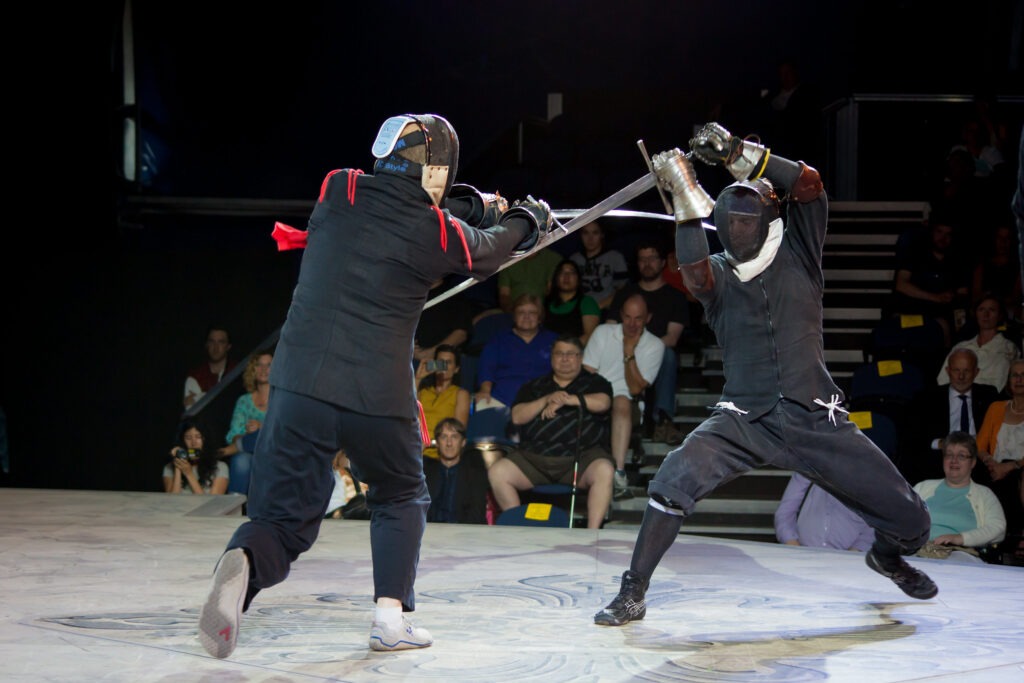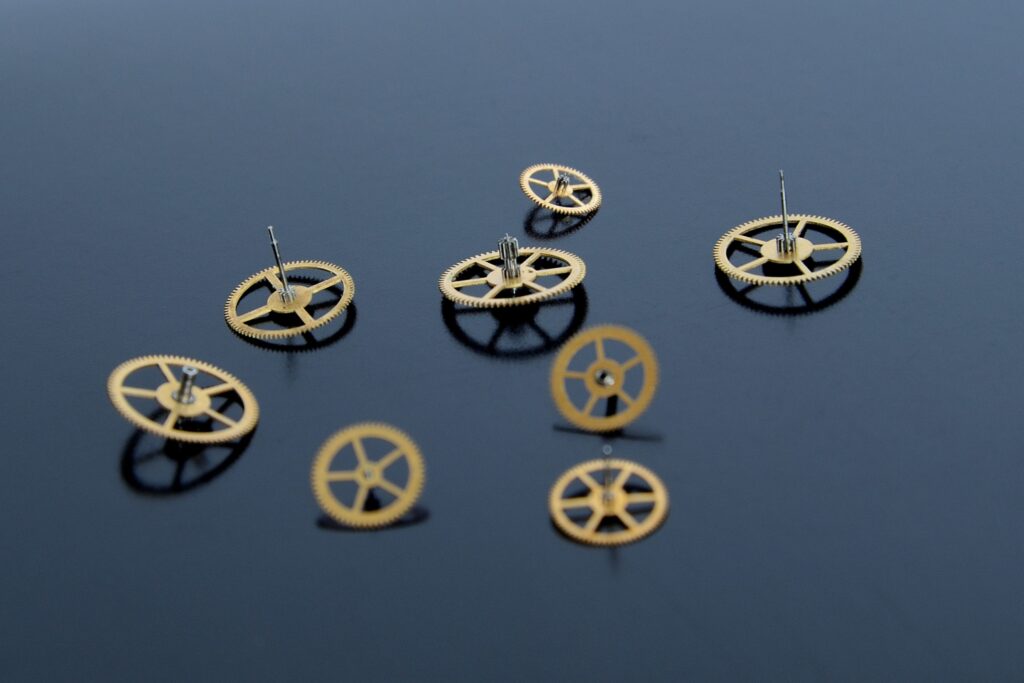The Three Vanities of Deception

Deception is one of the most alluring ideas in martial arts. Yet good deception is significantly more complex and subtle than simply being sneaky. Today we’re going to break down where deception fits into overall strategy, the most common pitfalls, and how to build feints and invitations that reliably succeed and don’t lead to double hits.
Three Modes of Fighting
In the Duello Armizare system there are three core strategic modes that define your general thematic approach to a fight. They are:
- The True Fight: Seek to constrain the opponent through direct cover of their weapon with yours. When you have control, collapse the distance; when you don’t, recover and get control back. Strike only in tempo (when the opponent is in measure and moves in a predictable way).
- The Adaptive Fight: Continually move forward. Slowly at first then with increasing intent. Seek control first but then adapt to losses and ties in control through changing angle and blade geometry so that you can proceed with cover until you strike.
- The Deceptive Fight: Use false control, false openings, and false attacks to lure your opponent into predictable responses. Use these responses to seize greater control and/or strike.
Each mode of fighting has its place. The true fight is best used against chaotic and unpredictable opponents or those who are simply inexperienced enough not to recognize the implications of control. It is well suited to duels and tournaments where you have control and knowledge of the fighting environment, and retreating is safely available.
The adaptive fight is best when you have no option to back up. This is often the case in war and street self-defense. In some cases you might use this mode to confuse the tempo of a more experienced opponent. When you continually move forward you make it harder for someone who is seeking opportunities in gaps and pauses, and clear units of tempo.
The deceptive fight works best against those who give predictable responses to threats and openings. This could be someone who panics reliably or moves systematically. To deceive effectively you need someone who is going to give you what you want, when you want it.
The Vanity of Deception
A common scenario of an intermediate fencer vs a beginner:
Intermediate fencer’s plan: I’m going to attack to their outside and draw them into a wide parry, then feint to their inside to make them chase, then I’ll return to the outside and beat their weapon, then strike them as they attempt to recover.
Beginner fencer’s plan: Stabbing is good!
17th century fencing master Ridolfo Capo Ferro warns against the “vanity of the feint”. The vanity being a false assumption of an opponent’s response to your deception.
A common outcome in the above scenario is that the intermediate fencer goes in with a complex plan of deception and then simply gets hit by the beginner who doesn’t understand or even look for the actions of their opponent.
To avoid this error you need to ensure you have read the nature of the opponent sufficiently before using deception AND that you are creating a trap that they can recognize well enough to fall into.
In summary: don’t over-fence your opponent.
The Second Vanity: Insufficient Time
Any deception can be broken down into a few key components:
False Intention: The attack or invitation (an opening you create) that you are going to appear to deliver or offer.
Predicted Response: The movement of the opponent you expect in response to your False Intention.
True Intention: The attack or movement of control that will take advantage of the Predicted Response.
Proportion: The amount of time you have to move between the False Intention and the True Intention. This amount of time you have to work with is based on the size of their Predicted Response. The movement from the False Intention to the True Intention must be ≤ the Predicted Response.
The error here is to create an insufficient amount of response from your opponent, attack too deeply during your false intention, or open too widely or too closely in your invitation. Then, as you move to your True Intention the opponent has enough time to close the line, or worse counter-attack.
The goal here is to get the opponent to respond disproportionately to the threat or opening you are offering, giving you plenty of time to spring your trap.
The Third Vanity: Being too Wily
The important thing to note is that deception requires that you make movements that are clear to your opponent in form and time but misleading in intent. The error is to be so sneaky and unpredictable that your opponent responds in ways that are also unpredictable. Some examples:
Error of Form: Making a wily and chaotic attack that your opponent doesn’t understand how to defend against, so instead they panic and attack, leading to a double hit.
Error of Time: Creating an opening that your opponent is not ready to act on. You step in, create the opening. The opponent doesn’t take it. You wait for a moment hoping they will see it. Suddenly they attack and you find you’ve lost your own readiness. You get hit.
Make your intention clear, easy to read, and, in a sense, predictable. Predictable provocations garner predictable responses. You’re going to succeed in a deception not because you’re thinking in a more sneaky way than your opponent, but because you are thinking more deeply into the engagement than they are.
Recognize that you need to not only control and predict what the opponent is going to do but also when they’re going to do it. In the example of the invitation that is offered but not taken, don’t wait in distance for them to take it, instead step out and offer it again or shift your plan.
Condition Your Opponent with Real and Threatening Action
I tend to set up any deception by first trying to hit my opponent with a clear single action with control. Best case scenario I hit my opponent and don’t have to get too fancy. Worst case I teach my opponent that I mean to hit them and learn the nature of their response.
If an opponent doesn’t respond to a feint, then I return to trying to hit them with control. Again, I’ll either hit them or wake them up to the threat that exists in my movements. I need the opponent to be awake and reactive for them to be predictable. The best way to create this is with confident and clear action.
In Duello Armizare the Deceptive Fight is based on the True Fight. You only upgrade to deception when you can’t simply control and hit your opponent outright. When the opponent shows that they can sufficiently respond to your control, then its time to start fencing deeper and using false openings and attacks to lure them out of position.
Something to Try
Watch this video from DuelloTV where I share three depths where one can shift between the false intention and the true intention. I demonstrate with sidesword but these actions, and many variants, can be done with essentially any weapon.
Diving More Deeply Into Deception
Want to up your deceptive fighting game? We have many different courses on DuelloTV that will help you out think and out deceive your opponents. Check out:
Not yet a DuelloTV Scholar? Sign up to access these courses and hundreds more and support our work!




